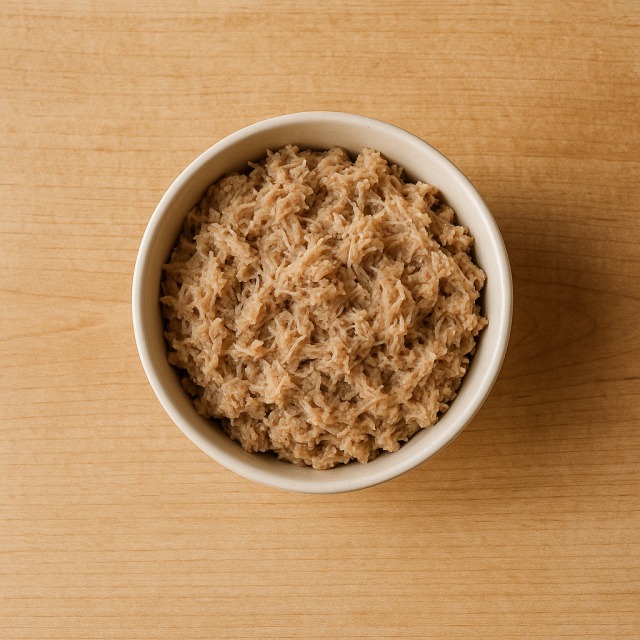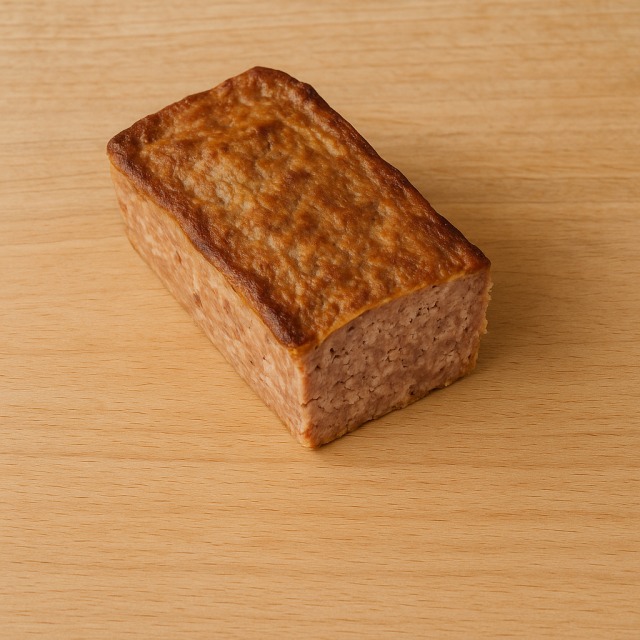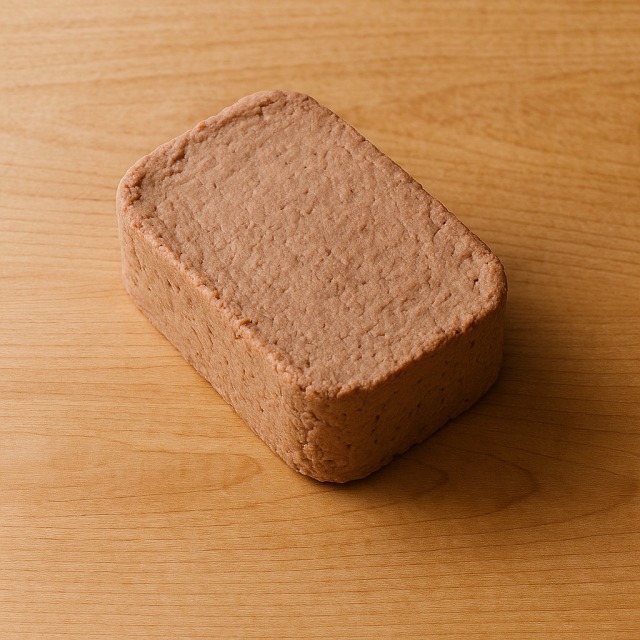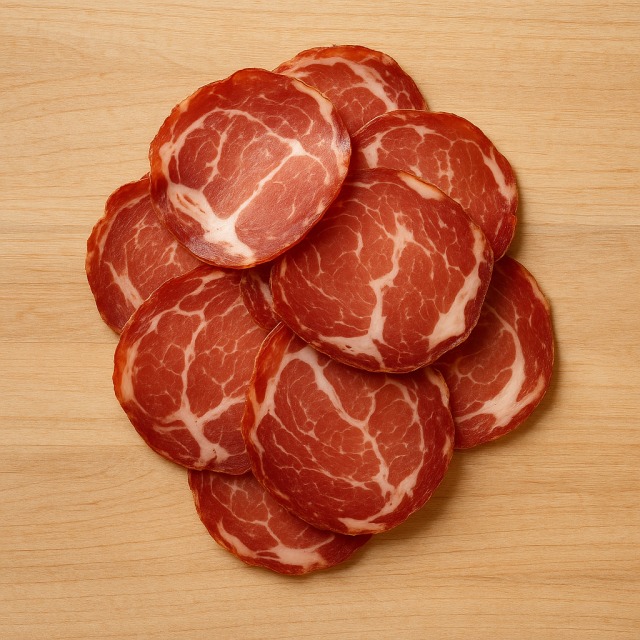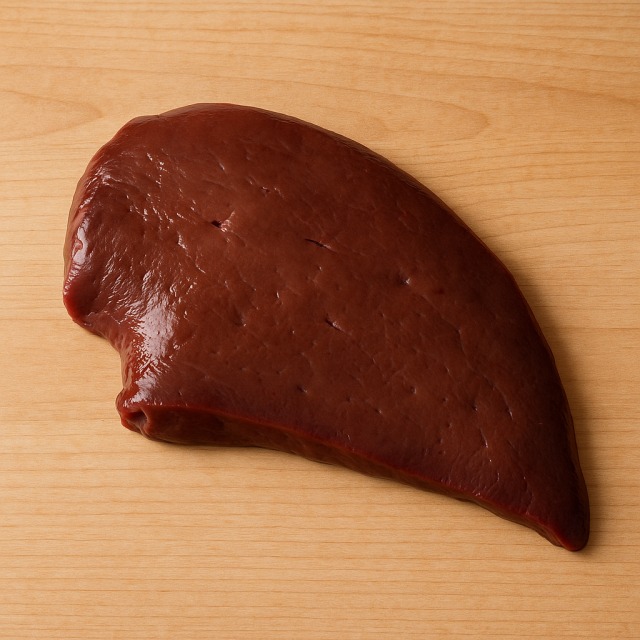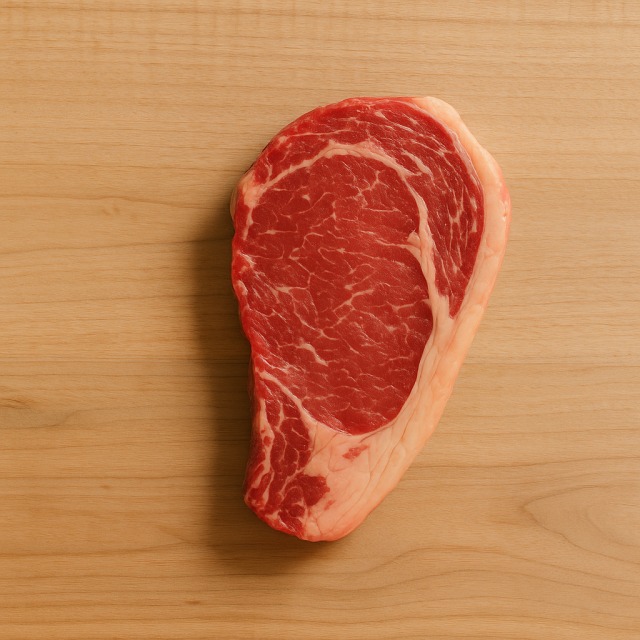Calorie Chart / Meat & Eggs / Pâté en croûte
How Many Calories Are in Pâté en croûte?
Calculation of the nutritional value & Recommended Dietary Intake of pâté en croûte
For g and a calorie requirement of kcal
| Calories 128 kcal | Proteins 4.8 g | Lipids 10 g | Carbohydrates 4.8 g |
| 6% | 6% | 15% | 2% |
Health benefits of pâté en croûte
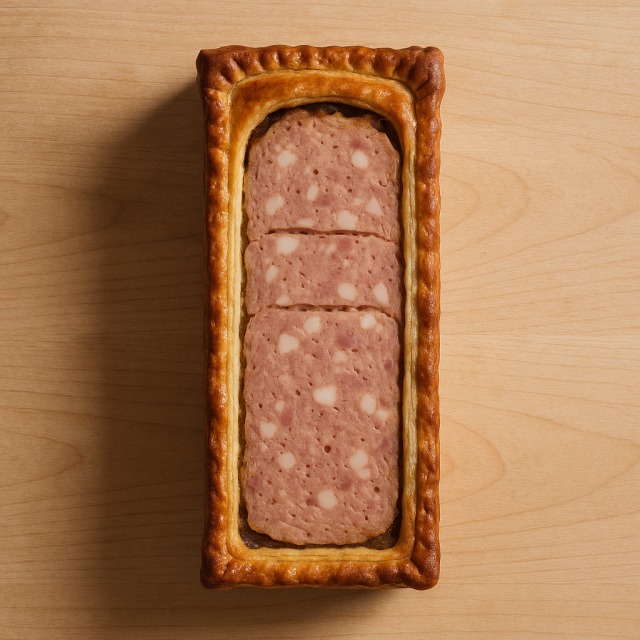
Pâté en croûte - 100g
Calories 321 kcal
Proteins 12 g
Lipids 25 g
Carbohydrates 12 g
Pâté en croûte is a traditional French charcuterie speciality that wraps seasoned meat in a buttery pastry. With 321 kcal per 100 g, it clearly falls into the high-calorie category; these calories come mainly from the crust's fat and the meat's intrinsic energy. Despite its calories, the dish supplies 12 g of protein per 100 g, giving it a better satiety profile than many pastries with similar calories.
The meat filling delivers heme iron, zinc and vitamin B12, all essential for red blood cell production and immune health. Pork fat contributes selenium and vitamin E, while the eggs often used in the forcemeat add choline and vitamin A. Therefore, although the calories are significant, pâté en croûte offers meaningful micronutrients. Compared with spreadable rillettes or luxurious foie gras, its calories are a touch lower, yet it remains more energy-dense than a lean slice of chicken breast.
Historically, the crust served only as a protective container and was discarded; eating it today doubles both flavour and calories. Anyone closely monitoring calories—whether for weight management or athletic performance—should weigh their portion rather than estimating by eye.
Tips for incorporating pâté en croûte into a balanced diet
Because pâté en croûte provides many calories in a small volume, start with a 60–80 g slice and complete the plate with low-calorie sides. A crisp salad of arugula, tomato and pickled onions adds fibre that helps moderate the impact of calories while brightening the dish.
At brunch, spread a thin slice on toasted wholemeal bread and crown it with ribboned cucumber. The whole grain slows the absorption of calories and prolongs satiety.
For an elegant starter, place diced pâté en croûte on steamed broccoli florets and drizzle with light vinaigrette. The vegetables bring volume and antioxidants without many additional calories, balancing the dish's existing calories.
You can also slip small cubes into a bowl of hot vegetable soup. Diluting the pâté en croûte in broth spreads its calories over a larger portion, useful for diners counting calories but still craving its flavour. Conversely, athletes who need extra calories after heavy training may pair it with a serving of brown rice to obtain sustained carbohydrates alongside the dish's already substantial calories.
Frequently Asked Questions
- How many calories are in pâté en croûte?
- There are 321 kcal per 100 g.
- Is pâté en croûte considered high in calories compared with other charcuterie?
- Yes. At 321 kcal per 100 g, its calories are higher than lean cured meats but lower than ultra-rich products such as foie gras.
- Can pâté en croûte fit into a weight-loss plan?
- It can, provided you measure portions and track calories: a 40 g slice supplies roughly 130 calories, so fill the rest of the plate with vegetables.
- Is pâté en croûte a good protein source for athletes?
- Its 12 g of protein per 100 g help recovery, but athletes must account for the calories and fat; supplementing with low-calorie, high-protein items like egg whites may be preferable.
- How can I reduce the calories when serving pâté en croûte?
- Trim excess pastry, slice thinner portions and surround it with low-calorie sides such as lettuce or pumpkin soup to lower the average calories of the meal.
- Is homemade pâté en croûte lower in calories than store-bought versions?
- Often, yes. Using leaner meats, less butter in the dough and adding vegetables can cut 30–50 kcal from the calories per 100 g.
Similar foods
Information provided by Calorie Menu may contain inaccuracies or errors. It cannot, under any circumstances, substitute medical advice or medication.
